SUMMARY
VENOM: Mild - no known danger
PREVALENCE: Common
ACTIVE PERIOD: Active at night
KEY ID FEATURES: Light tan to grey body with dark brown spots, long tail with slender neck
BEHAVIOR: Arboreal but frequently found on the ground, will move into 'S' position and bite defensively
SIZE: Small - 40-60cm
IUCN: NT - Near Threatened
OTHER: Rear fanged and technically venomous but not known to be dangerous to humans
GALLERY
IMPORTANT: Many snakes have significant variance in coloration and pattern even within the same species. There can also be extreme differences in appearance from juveniles to adults so it is important to never assume you have properly identified a snake.
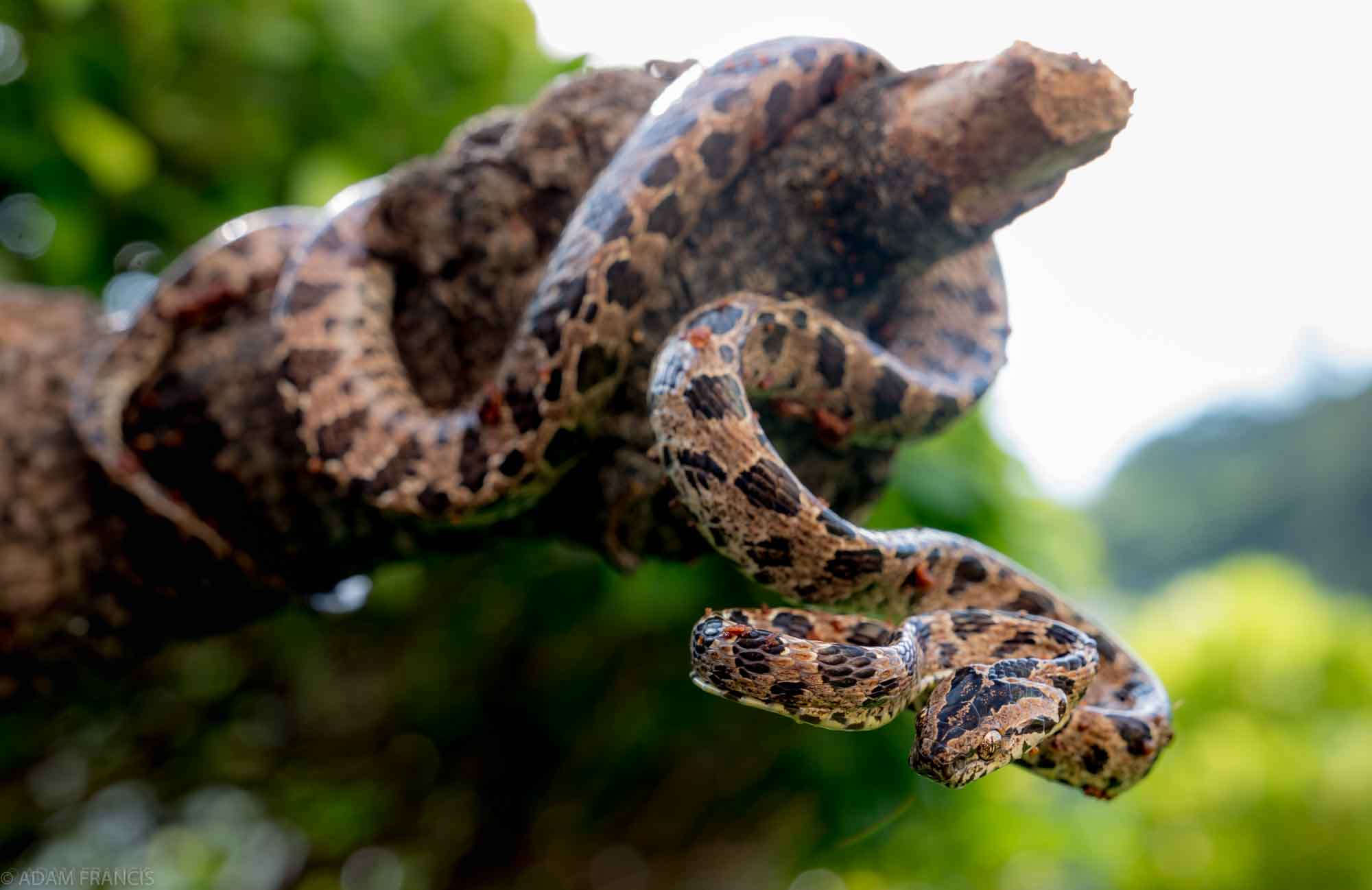
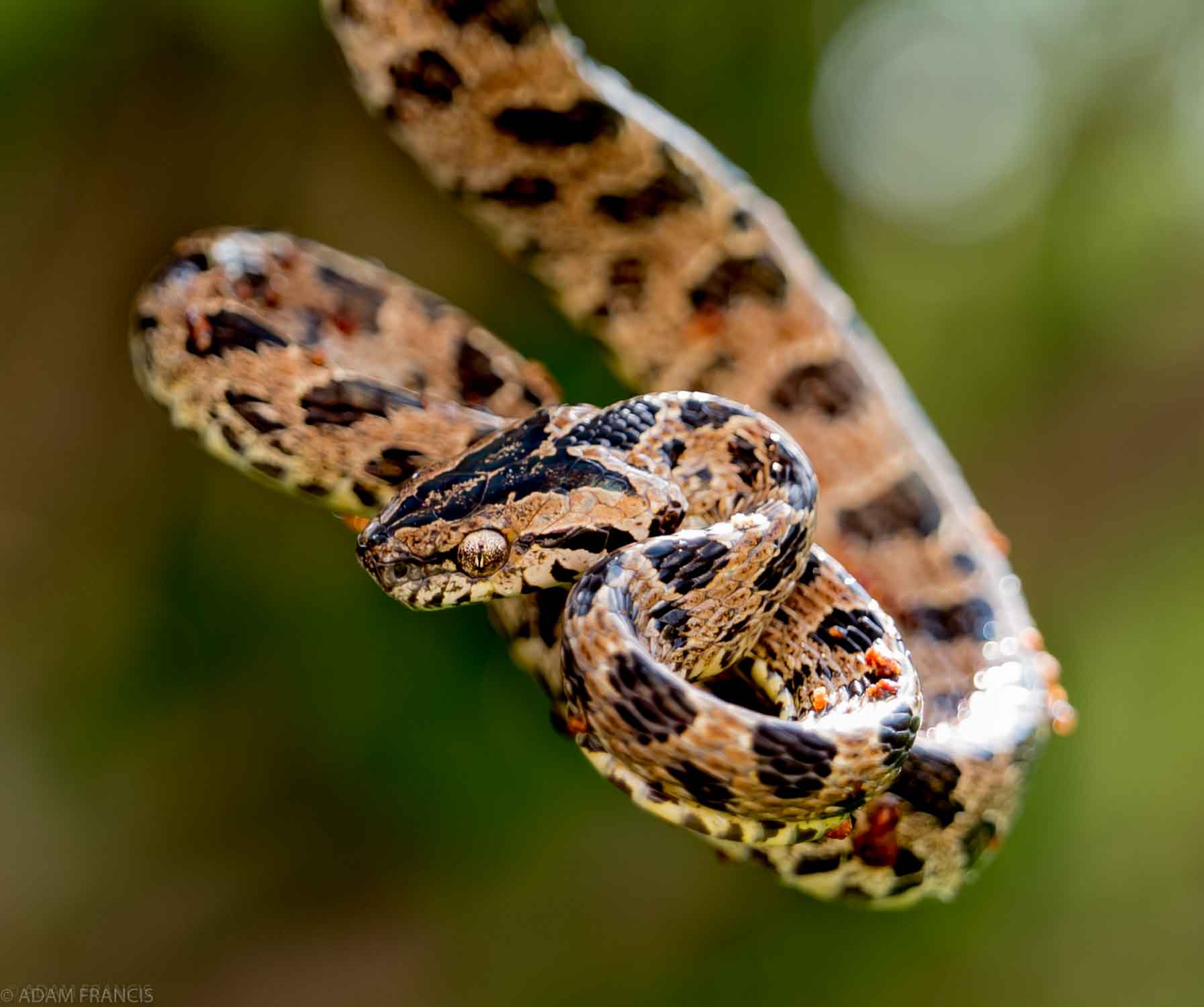

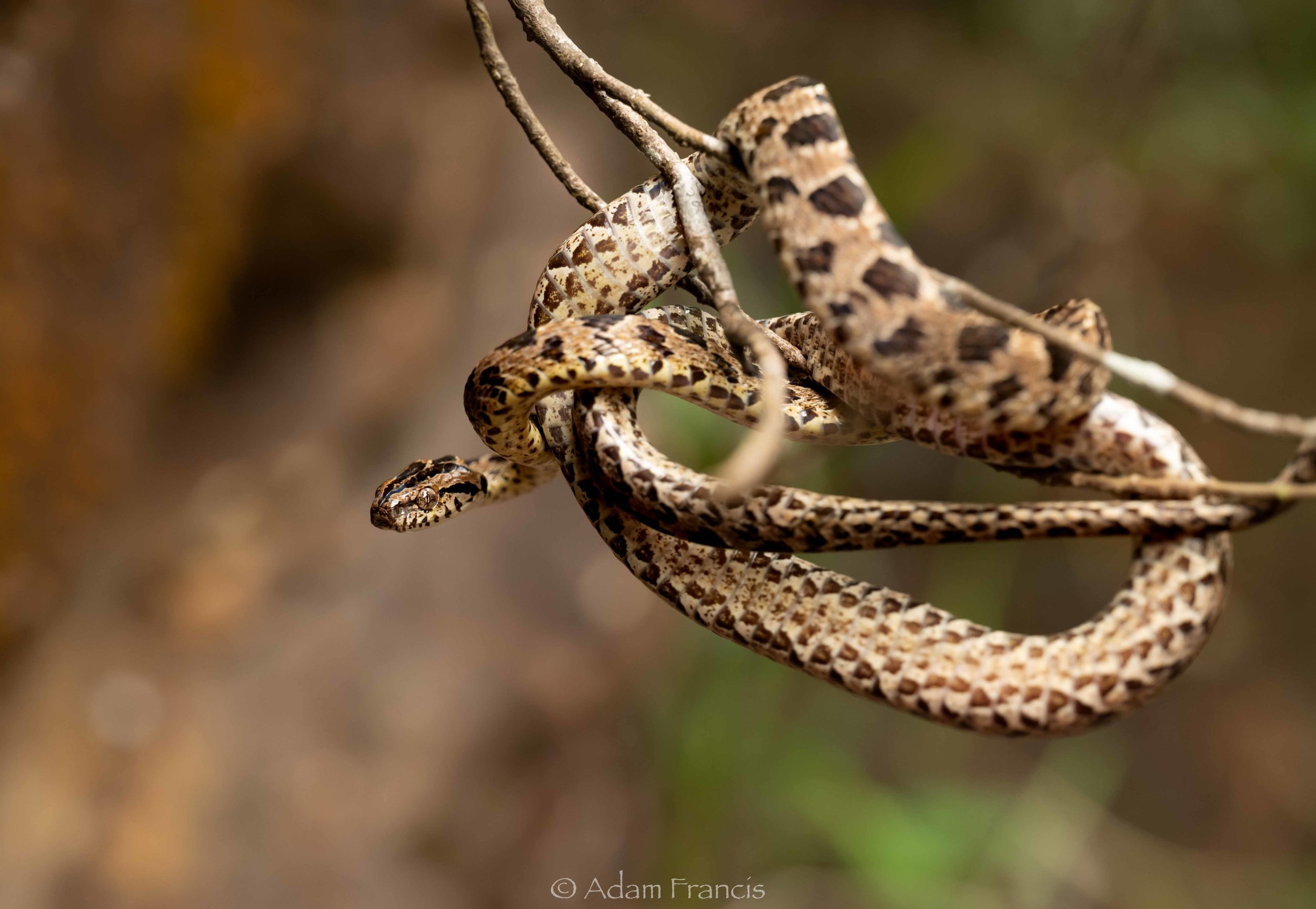

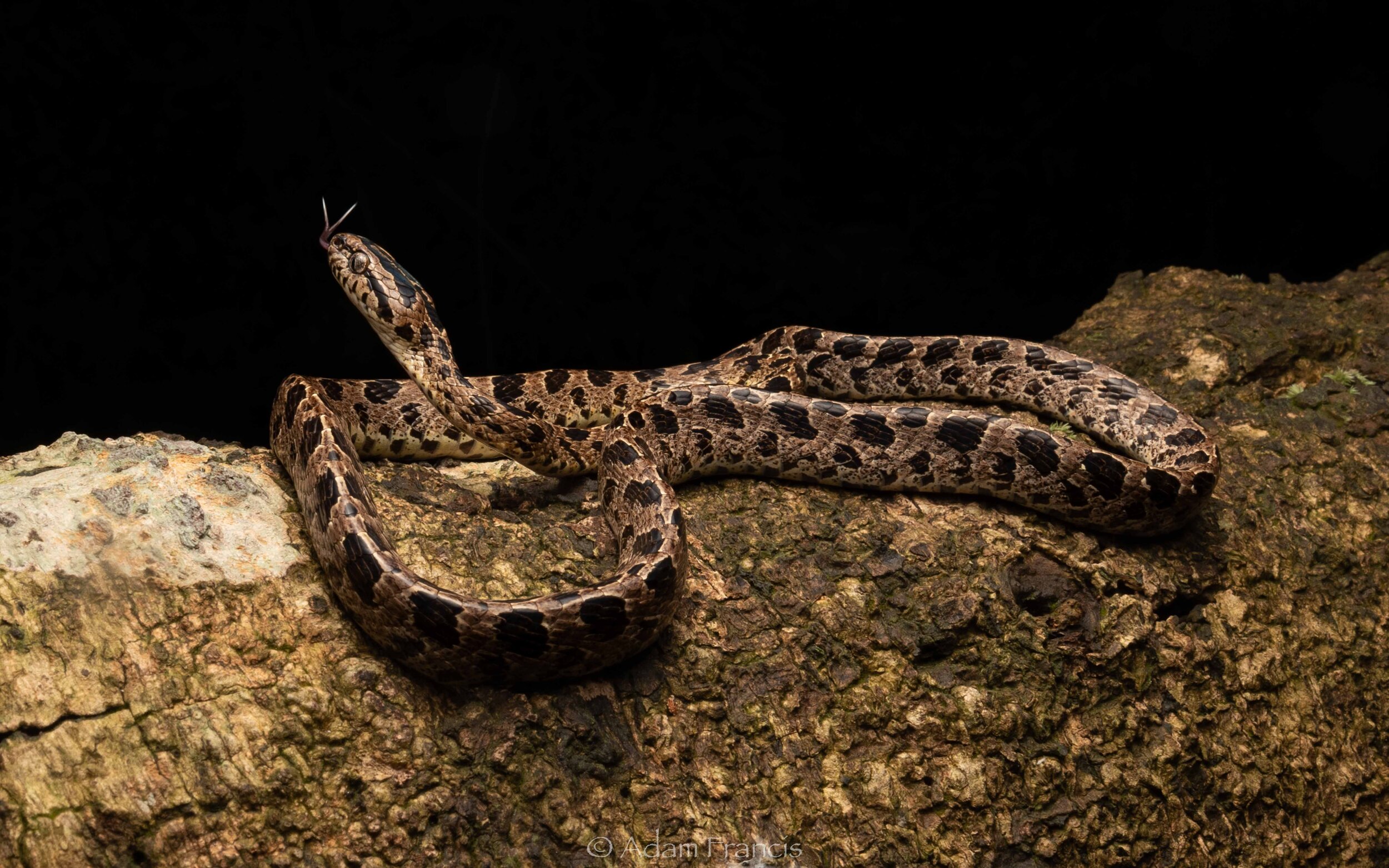
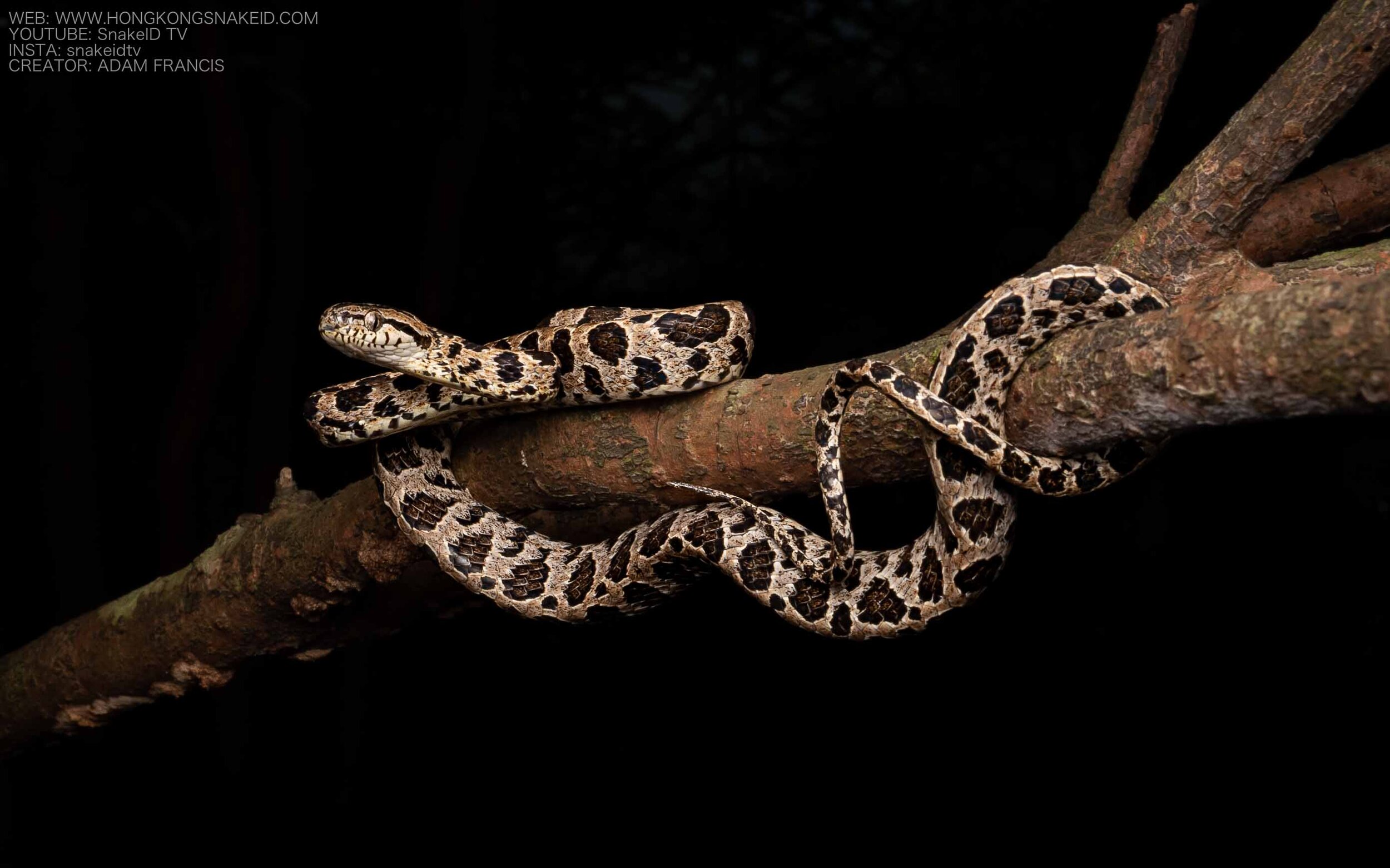
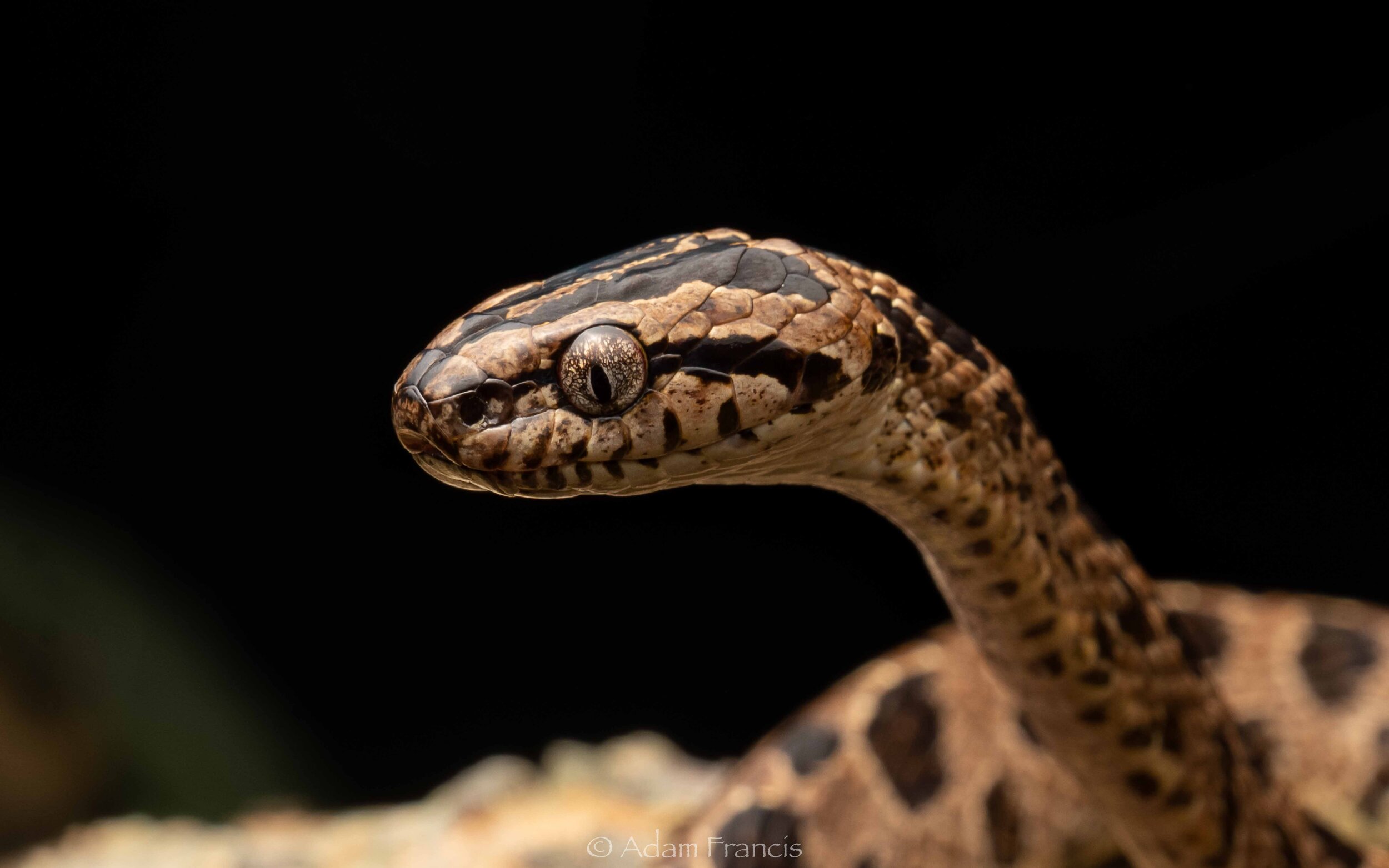
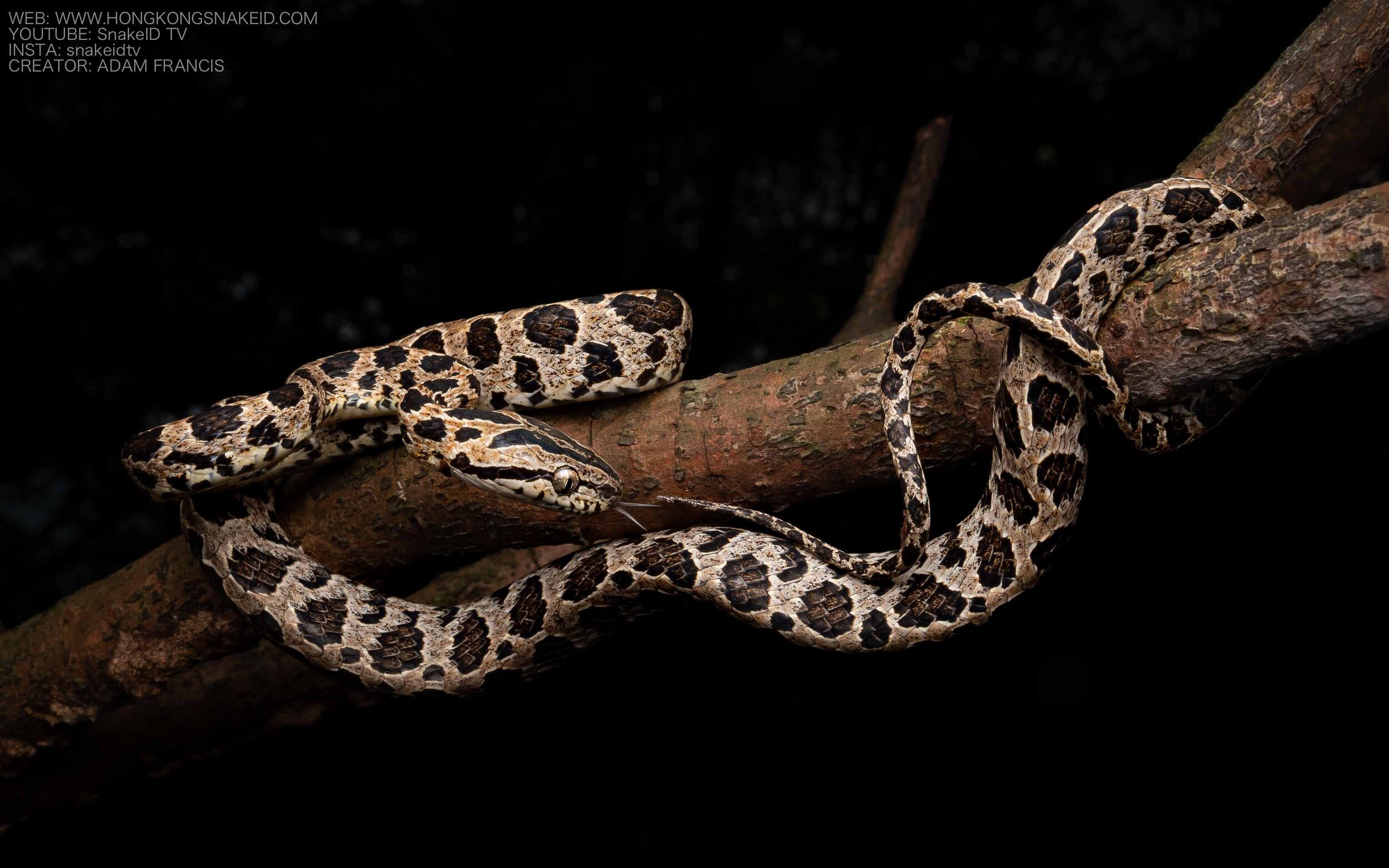
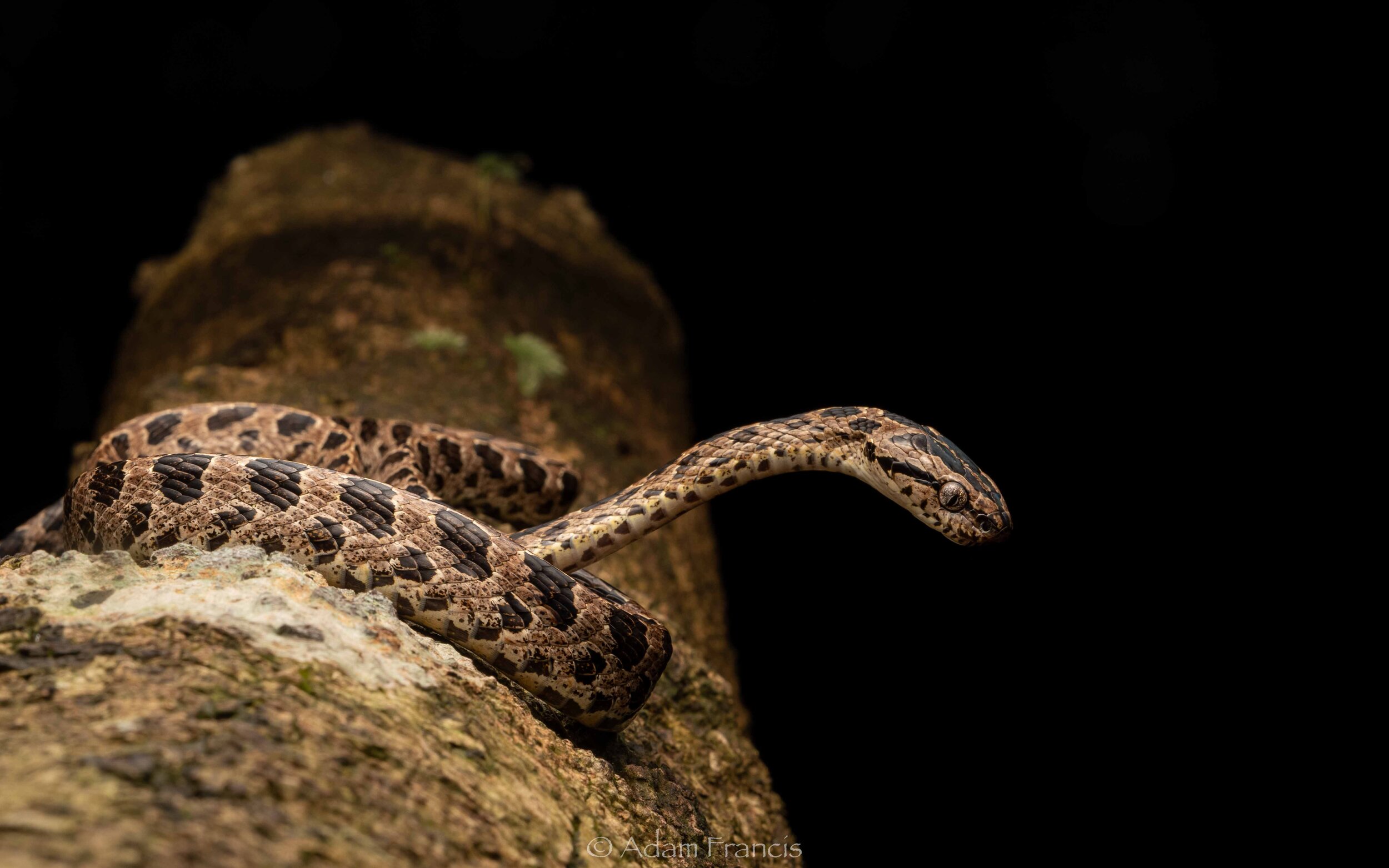
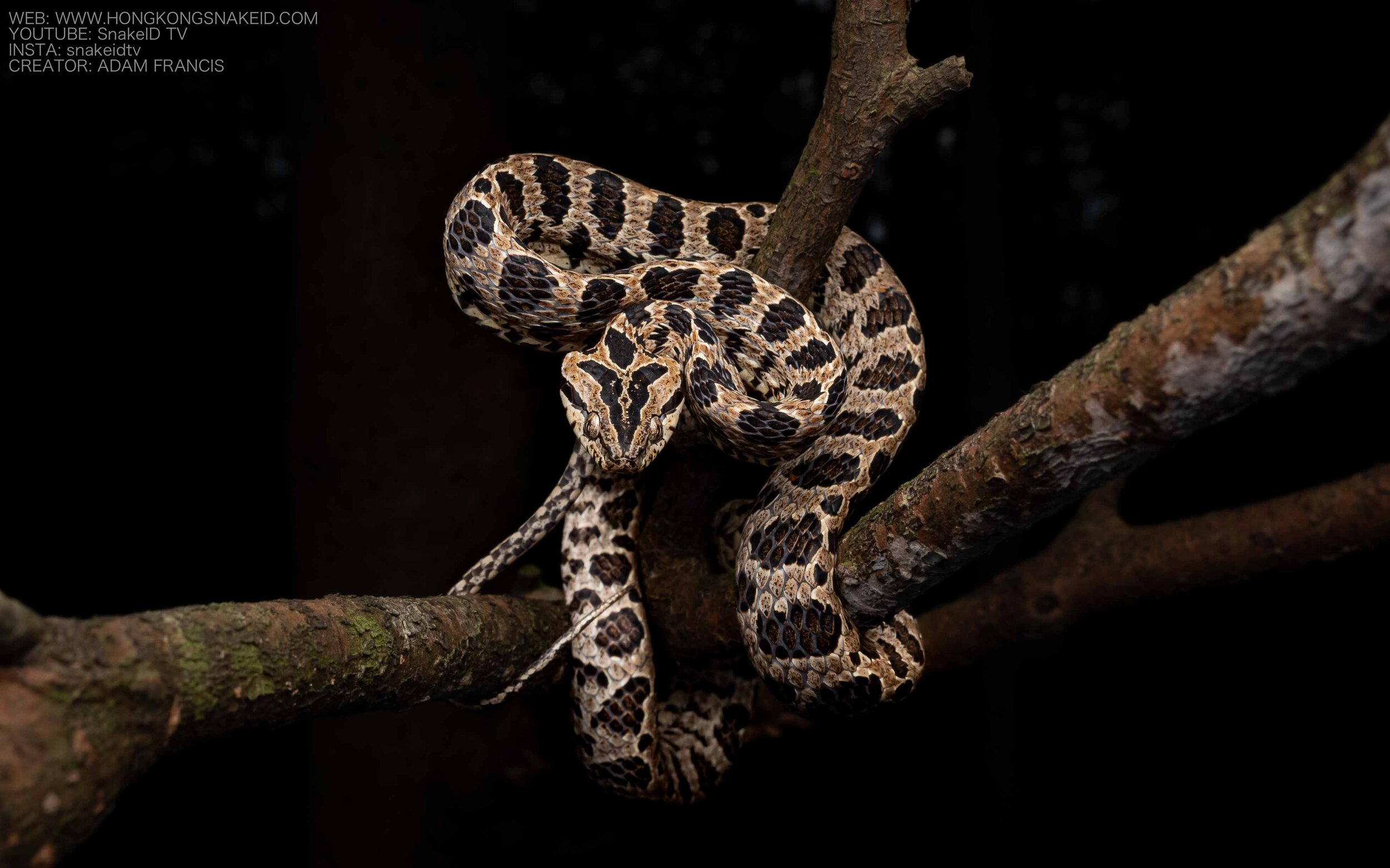
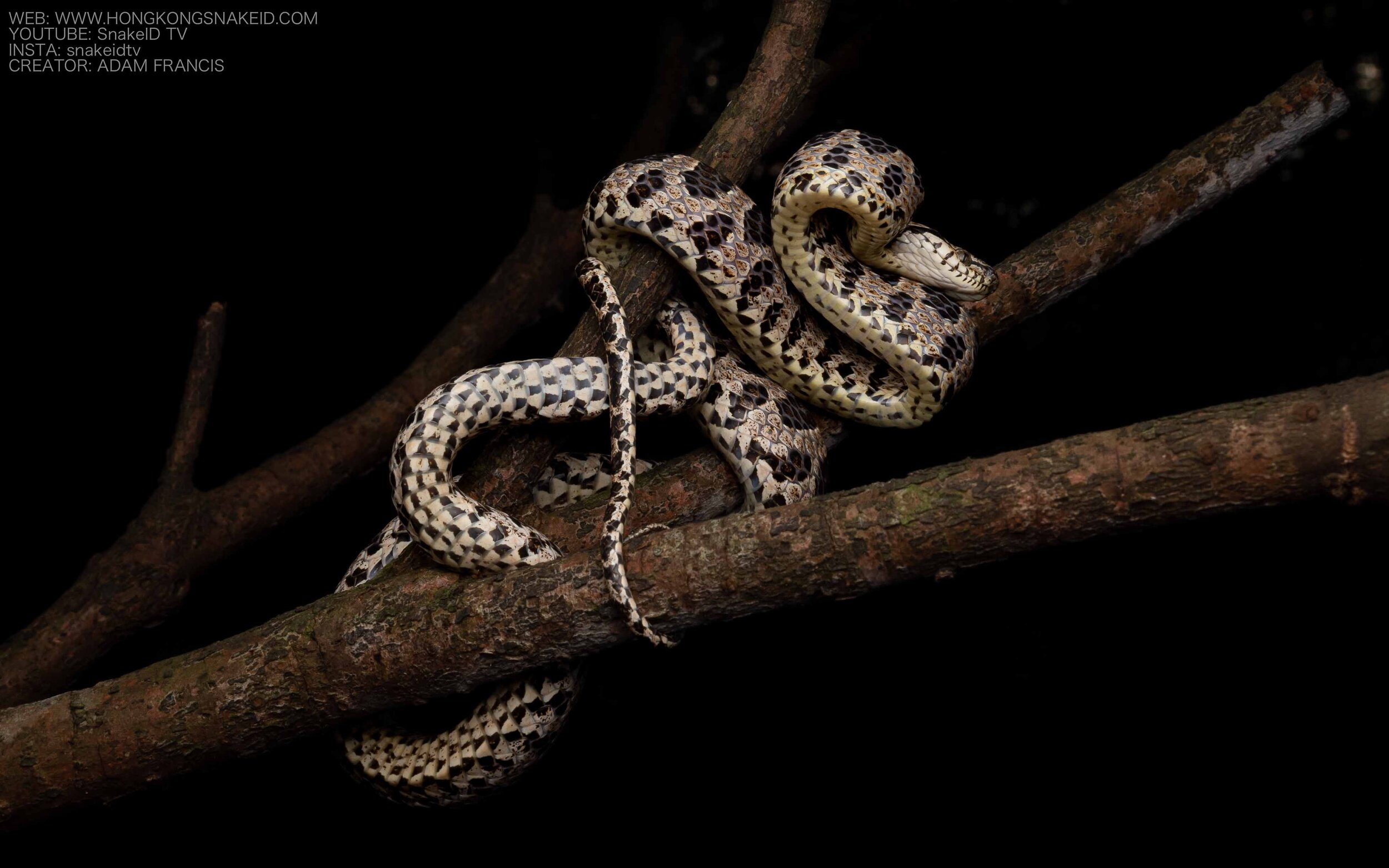
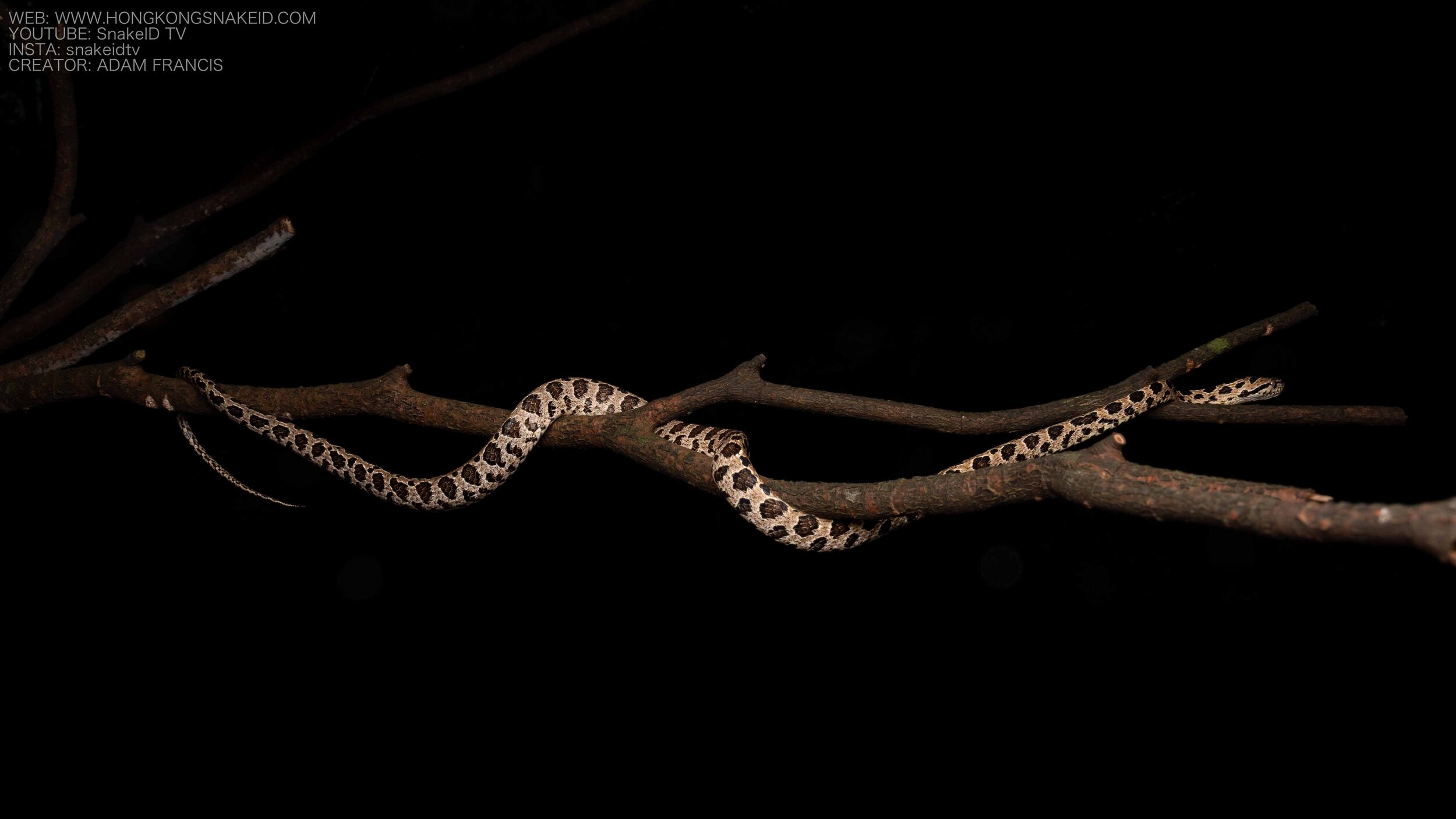
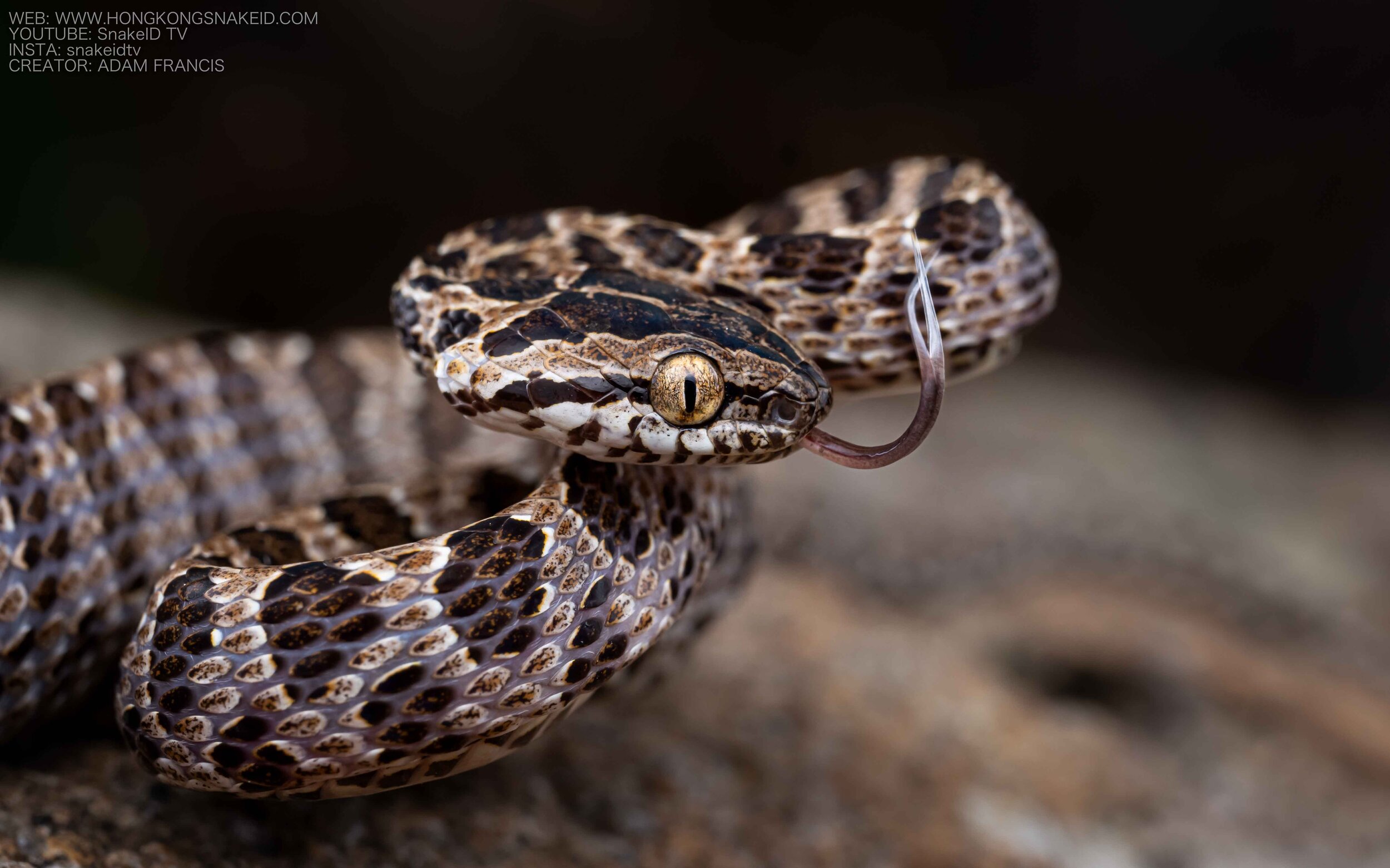
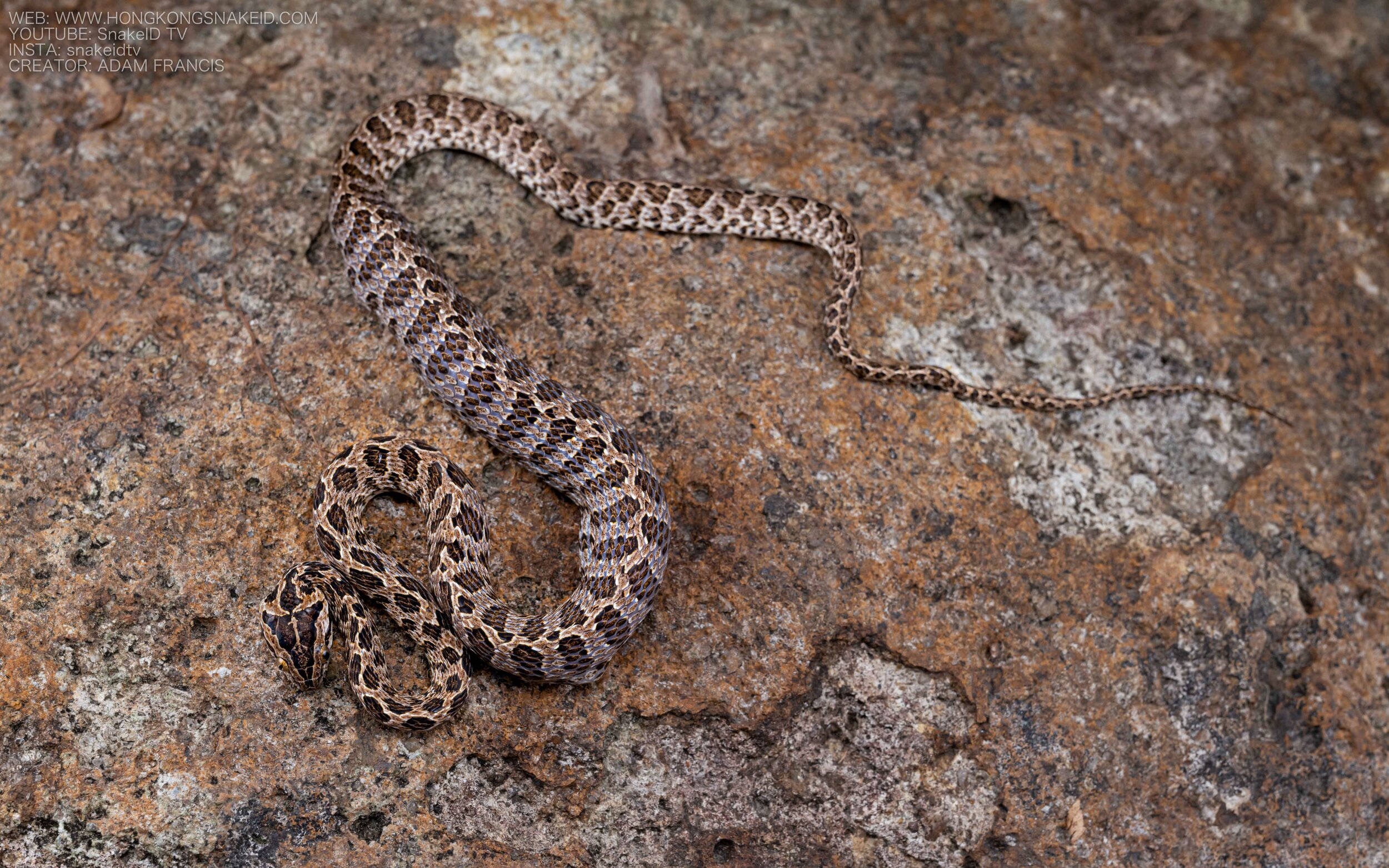

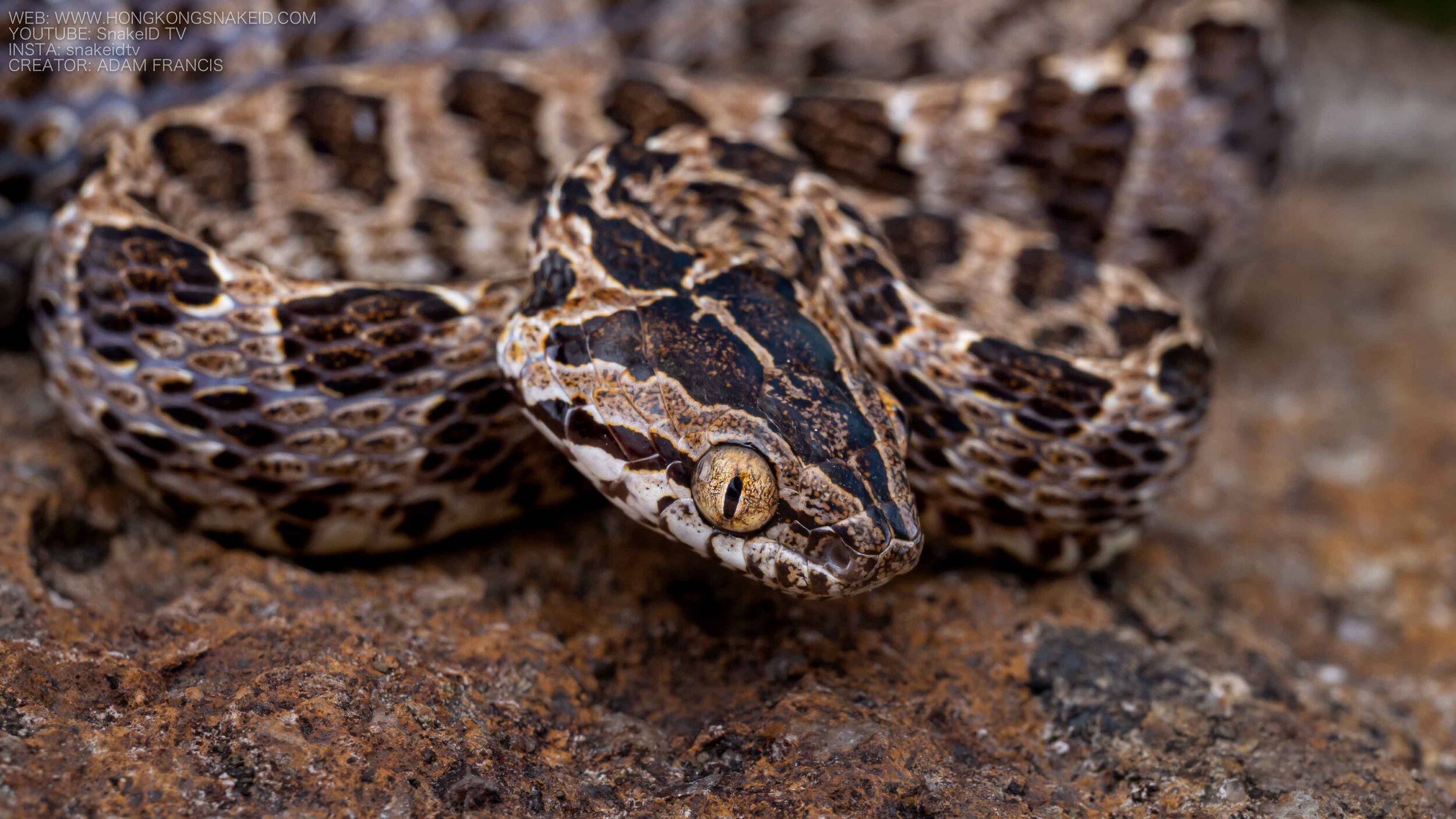
DESCRIPTION
Usually tan body with dark brown spots, sometimes lighter grey with dark brown spots. Head usually displays a black arrow shaped marking. Large gold eyes with vertical pupils. Many spotted cat snakes are largely arboreal and have long thin necks with exceptionally long thin tails. Head can flatten slightly when defensive appearing similar to vipers. Black and white spotted belly and a keel shaped back. As a technically rear fanged snake they are mildly venomous but there are no known cases of serious envenomation.
BEHAVIOR
The Many Spotted Cat Snake is an arboreal snake and as such is prone to seek out high ground when confronted. They also commonly display initial aggressive behavior by positioning their front half into a defensive 'S' position. They will strike with largely false bites and occasionally real hits, but their diminutive size renders any genuine bite relatively harmless. Many Spotted Cat Snakes are also prone to calming down shortly after displaying their initially aggressive behavior. (Click here if the video block does not load:https://youtu.be/IaonhbylZUI)
HABITAT
Due to their largely arboreal nature Many Spotted Cat Snakes are generally found in forested areas, often close to some water source. They have also been observed hanging from branches over water possibly hunting for fish or amphibians. During the day they hide in hollow logs or under ledges closer to the ground.
MISTAKEN IDENTITY
NO SNAKE SHOULD EVER BE HANDLED BY ANYONE BUT EXPERTS: The Many Spotted Cat Snake is a relatively uniquely patterned snake and is difficult to mistake with other species especially when considering their arboreal behaviors. However, it does bear a strong resemblance to the very uncommon Pointed-scaled Pit Viper or “Habu” which is highly venomous and bites readily. The author has observed both species sharing habitat so despite the uncommon occurrence of the Habu, the risk of mistaken identity is potentially high in specific areas.
LARGE SPOTTED CAT SNAKE vs POINTED-SCALE PIT VIPER / “HABU”
Key Differences Summary: The Large Spotted Cat Snake has a smaller rounded head, smooth scales and a keeled spine where the Habu has a large flat arrow shaped head, heavily keeled scales and a mostly round body. Notwithstanding those differences these species are highly similar in appearance so please review the detailed differentiators included below:
HEAD: This is one of the best differentiators between the species but can still be difficult for the inexperienced due to the Cat Snakes propensity to flatten its head when defensive. Despite this behavior there are two significant ways to differentiate by the head. First, size relative to body. The cat snake has a smaller roundish head (when not defensive) with large smooth scales and a distinctive black “arrow” marking on the top. The Habu has a very large head relative to its neck with tiny granulated scales and scattered black to light brown markings usually with two lines running down either side of the head from the eyes to the back of the jaw.
CAT SNAKE: Large smooth scales, black arrow markings
HABU: Tiny granulated scales, faint markings
SCALES & BODY SHAPE: The Cat Snake has completely smooth shiny scales running the length of its body while the Habu has heavily keeled matte scales. The Cat Snakes scales are also larger relative to the Habu though this would be difficult to determine from a safe distance. The head scales of the Cat Snake are significantly larger than the Habu which has obviously tiny granulated scales. In addition to the scales, ironically the body of the Cat Snake is keeled with a pointed spine whereas the Habu’s body is round. Finally the Cat Snake’s vertibral scalse (those running down the spine) are enlarged realtive to the rest of the body scales where the Habu’s body scalse are all uniform in size.
CAT SNAKE: Smooth Scales, Keeled Body Shape
HABU: Keeled Scales, Round Body
EYES: The eyes of these species are strikingly similar in shapr and color. Both are large relative to head size, both are gold in color and both hvae vertical pupils. At very close review there are small discernable differences in markings on the eyes but these are not apparent at safe viewing distances. As a result, the eyes cannot be used to differentiate the species.
CAT SNAKE: Gold eyes with vertical pupils.
HABU: Gold eyes with vertical pupils.
The Large Spotted Cat Snake and the Pointed-Scale Pit Viper or Habu are one of the most striking example of non-dangerous snakes mimiking dangerously venomous species. Luckily the chance of encountering a Habu is relatively low, but their appearance to Cat Snakes is so strong and their venom so dangerous that it is important to never take a chance and assume you have correctly identified these species.








